At the beginning of the presentation there is the question – where do I get what? Like most, we started with the retiarius display at AER.
There we received great basic equipment at a very beginner-friendly price (see Fig. 1). However, if you compare the mesh size of 25cm with the explanations by Marcus Junkelmann in „Gladiators The Game with Death“ p.94f, we find that mesh sizes between 10 and 20cm have been tested and found to be functional. The material hemp and the net diameter of 3.5m is adhered to by the AER net, but contrary to what Junkelmann says it is angular. Here our own image evaluations show that both round and square nets were used. For curious people, page 22 of the „Origin an the development of the Retiarius“ by Gregor Barth [5] is recommended.
There you can see both types of nets side by side. (see Fig. 2)
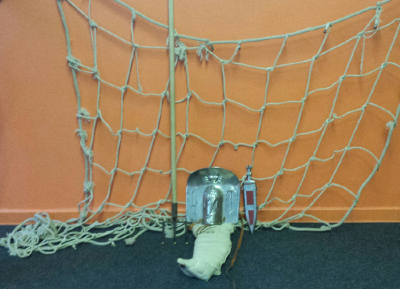
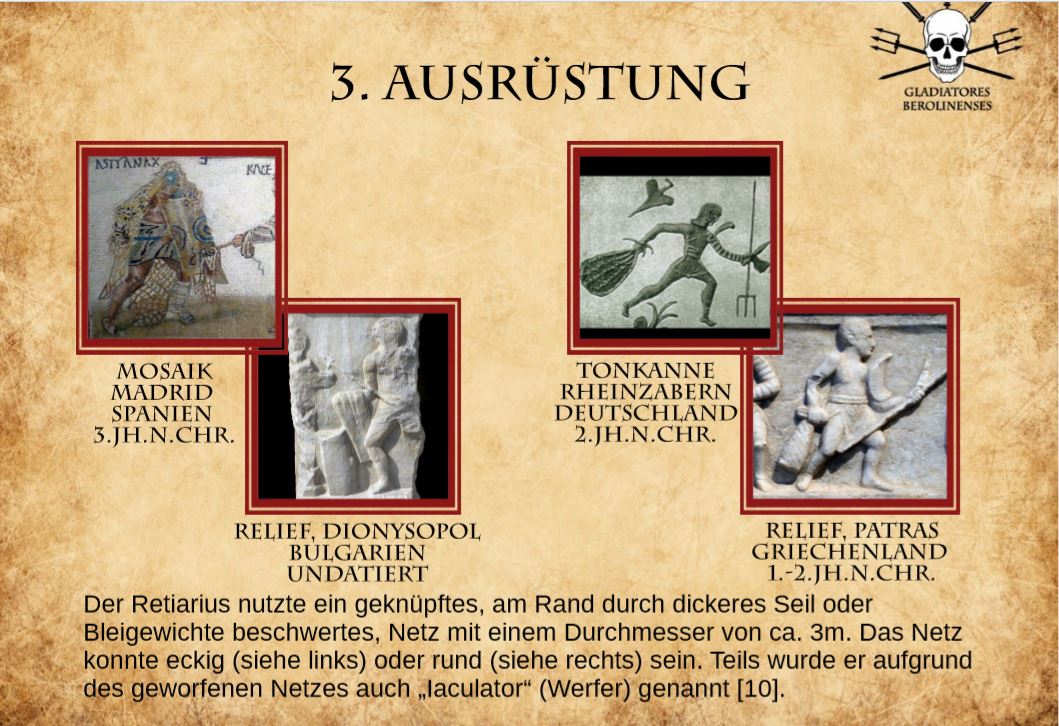
Since we still have three of the AER nets, we started looking for a net crafter who could create a round rete for us. That turned out to be extremely difficult for years and I didn’t get a serious offer on the table until 2020. But during another research we found his old source of supply in Junkelmann on p.95. The Renate Heberle company in Altusried. After contacting them, an interesting discussion started, with the craftsman of a guild that is now rare. As a result, mesh samples were made from two materials, hemp and jute (see Fig. 3). Both materials were used for fishing nets in ancient Rome. (see Bekker-Nielsen-Ancient_Nets_and_Fishing_Gear p.65f „… nets mostly hemp, although jute, flax, linen and wood fibers were also used …“).
Here we have left out the knot technology because it would be highly speculative due to the extremely rare location of nets in general and especially with gladiators (a picture illustrating this can be found in the above book on page 54 and p. 62 [1]). Even the charred net find from Herculaneum was assigned to fishing rather than gladiature (see Junkelmann p. 201 [2]). If you want to experiment here, Figure 4 is recommended. We used a simple fisherman’s knot for this net.
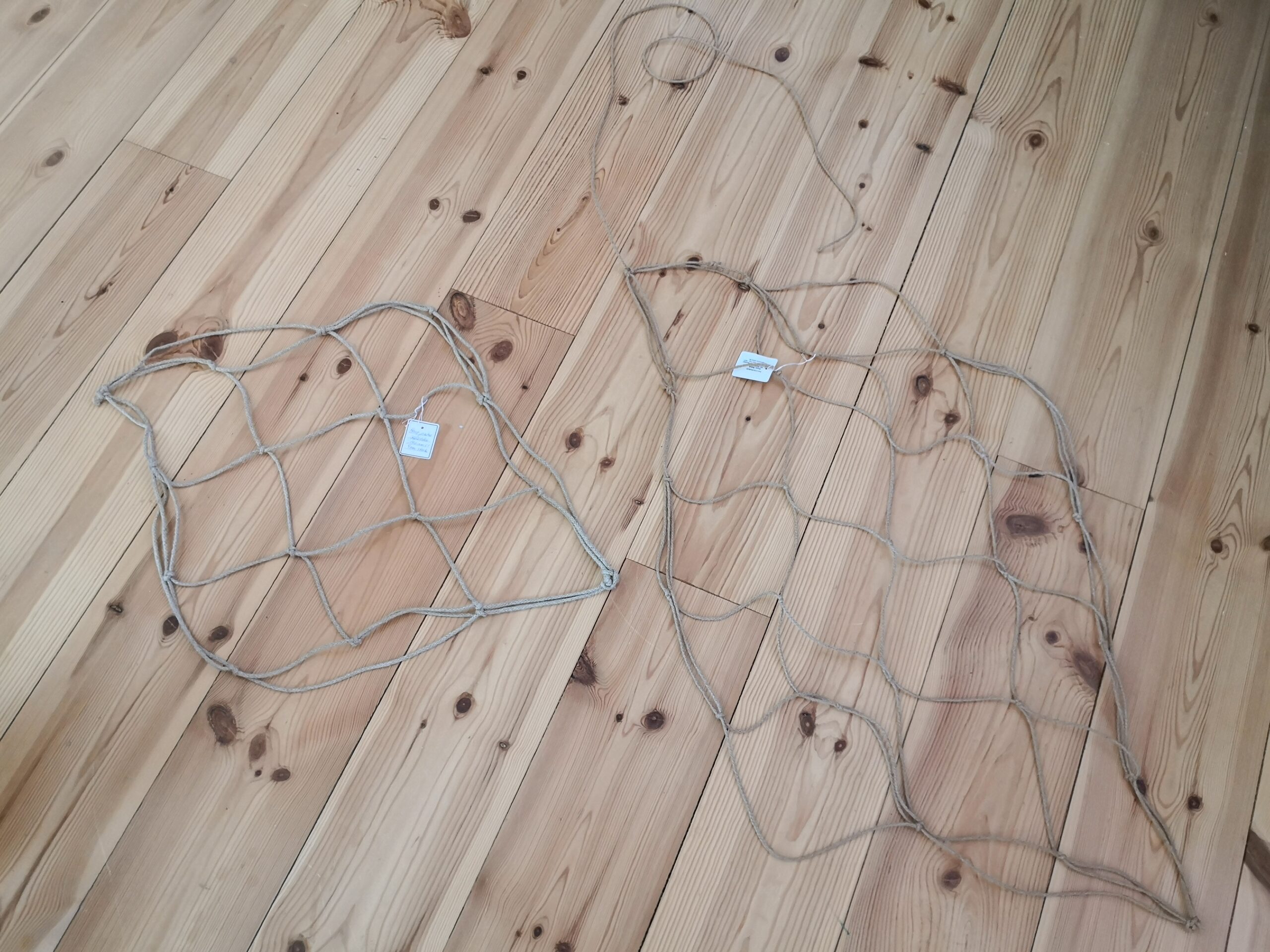
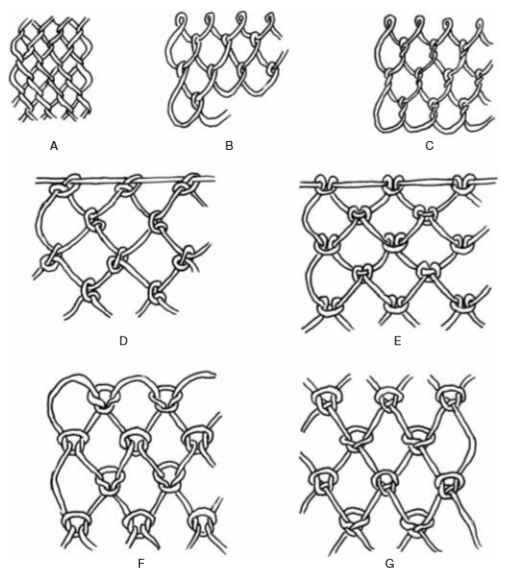
Now that the size, shape and material had been determined, we had to decide on the material thickness. There on p.56f from the Bekker we only find a hint that the network strength correlates with the purpose and, according to Homer (Il. 5.487: aphisi linou halonte panagrou), a wide-ranging net that catches everyone. According to Junkelmann, the net weighs approximately 1.5 kg and had lead weights. From Table 1 you can see very nicely that 9m² net with a 6mm rope thickness (51m * 0.018kg / m) would weigh about 1kg; 3.57kg at 10mm. The tensile load should be similar to human strength, since the purpose is known. The hand strength according to the study by Nadja Schreiber [4] is between 45 and 60kg. So the rope strength must be six (with lead weights) to 8mm if Junkelmann’s weight specification is correct.
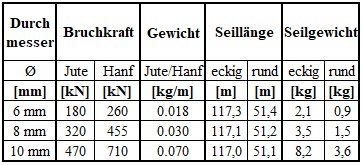
We are therefore testing a variant with 6mm and a variant with 8mm rope strength. The 6mm-rope is weighted with individual lead weights to reach the target weight, with the 8-rope only the outermost mesh is provided with a lead cord to optimize the opening properties. The net in the finished version has a weight of 3.7kg with 6mm rope strength and a lead weight in each mesh.
Since some early illustrations show a return rope, we will equip both networks with one to evaluate the advantages and disadvantages. When not in use, it can be knotted or cut.
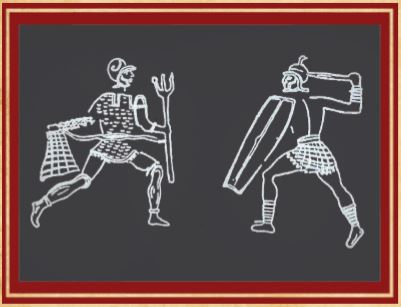
The throwing properties of the round net differ massively from those of an angular net. We have tried different throwing techniques and the most practical were a simple rim to center grip or, for shorter retiarii, a triple grip to adapt the net overhang to the body size. Here is further testing, but you can keep the outer rim between short and vary long throw seamlessly. The round net unfolds very easily and has the pleasant property of not getting tangled. This enables resumption and re-throwing.
In summary, I can say that this first variant has turned out to be almost perfect for a 1.88m large, medium-strength retiarius but can also be used by 1.68m retiarii.
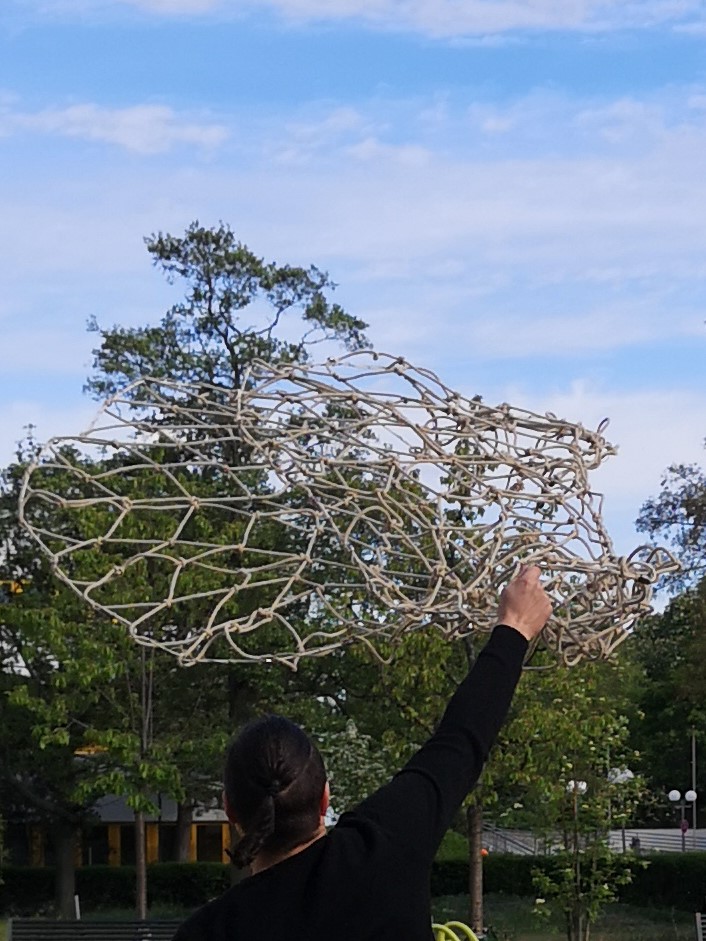
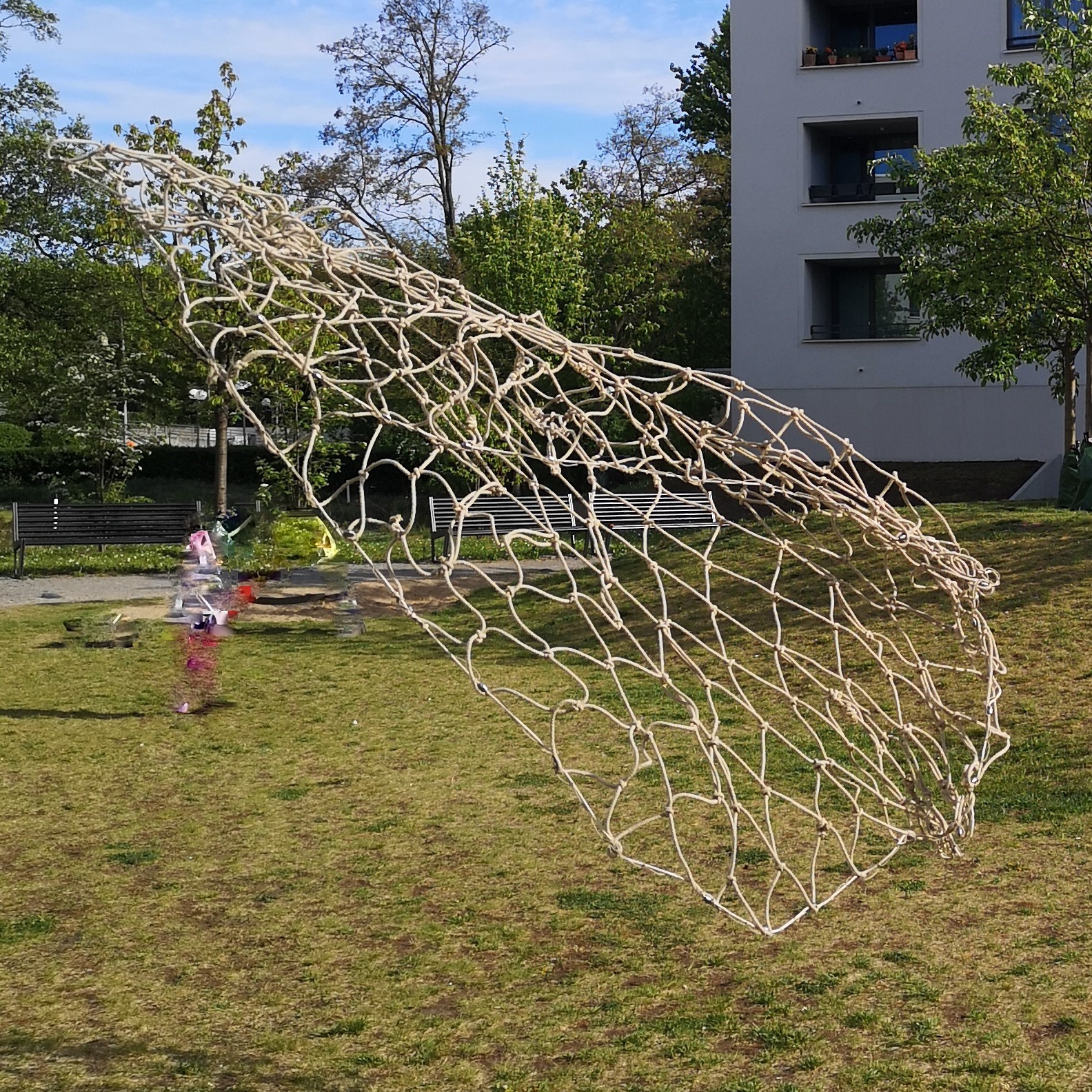
At the end we only want to give you a few curiosities from this research:
1. Playground nets in Germany have a permissible mesh size of up to 10 cm or from 25 cm (safety aspects) – the retiarius, with the mesh size in the middle, is therefore also a human catcher according to German standards.
2. Jute ropes must not be used to secure heavy loads. – therefore unsuitable for use against secutors
3rd inscription from Pompeii, which supports the hand power thesis: „Crescens retiarius puparum nocturnarum“ (Crescens, who catches the dolls at night with his net)
Valete your pullus
Sources:
[1] T. Bekker-Nielsen & D.B. Casasola: „Ancient nets and fishing gear“. In: Servicio de Publicaciones de la Universidad de Cádiz (ed.): Proceedings of the international workshop on ‚Nets and fishing gear in classical antquitiy: a first approach‘ (2007)
[2] M. Junkelmann: „Gladiatoren: Das Spiel mit dem Tod“ (2008) ISBN: 978-3805337977
[3] DIN-EN 1261 old DIN 83325 fiber ropes for general use – hemp; German version EN 1261: 1995
[4] Guide values were published in the specialist magazine „Plos one“. They are based on a study by sociologist Nadja Schreiber, University of Vienna
[5] Origin and the devellopment oft he retiarius published by Gregor Barth in https://www.gladiatorenschule-berlin.rocks